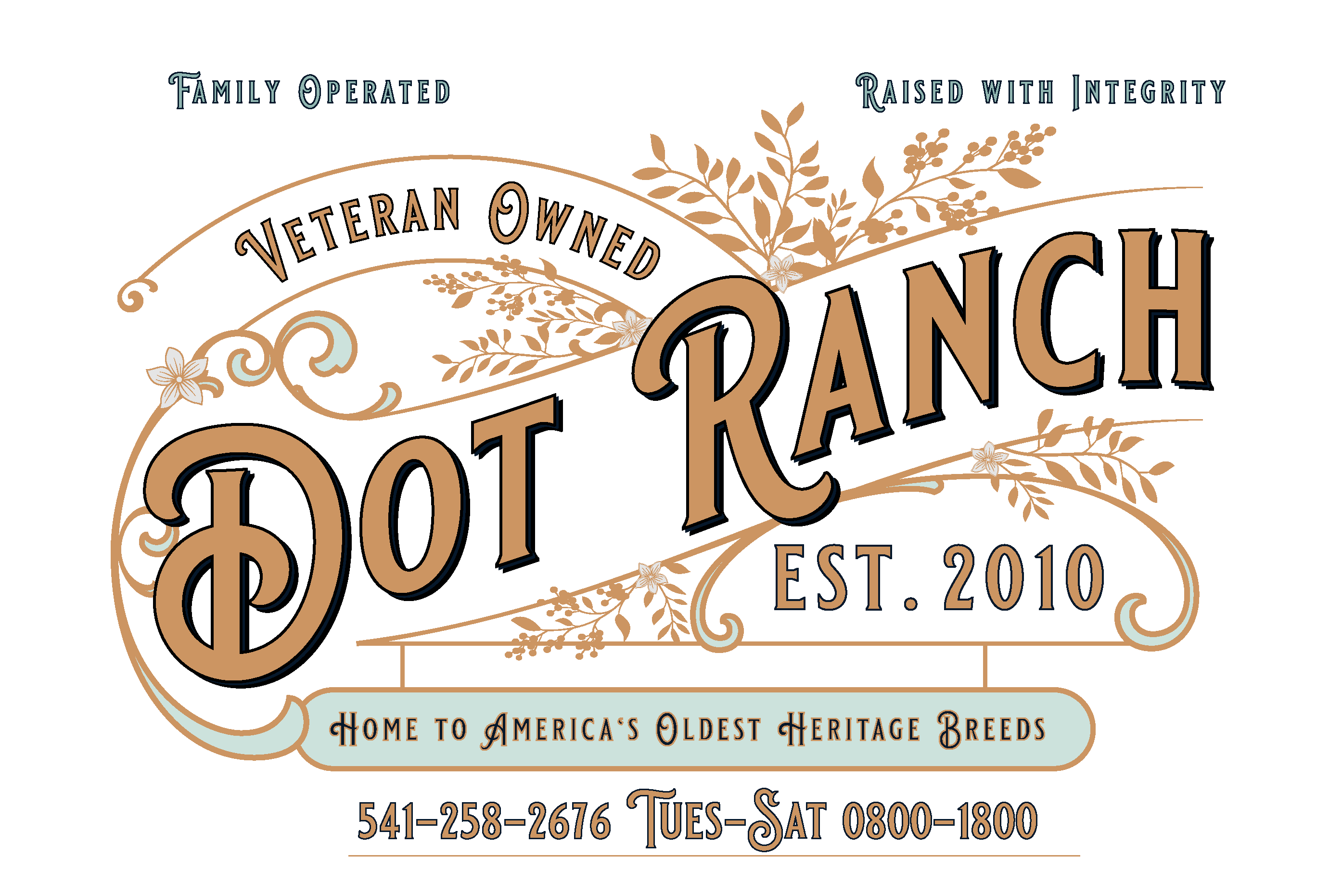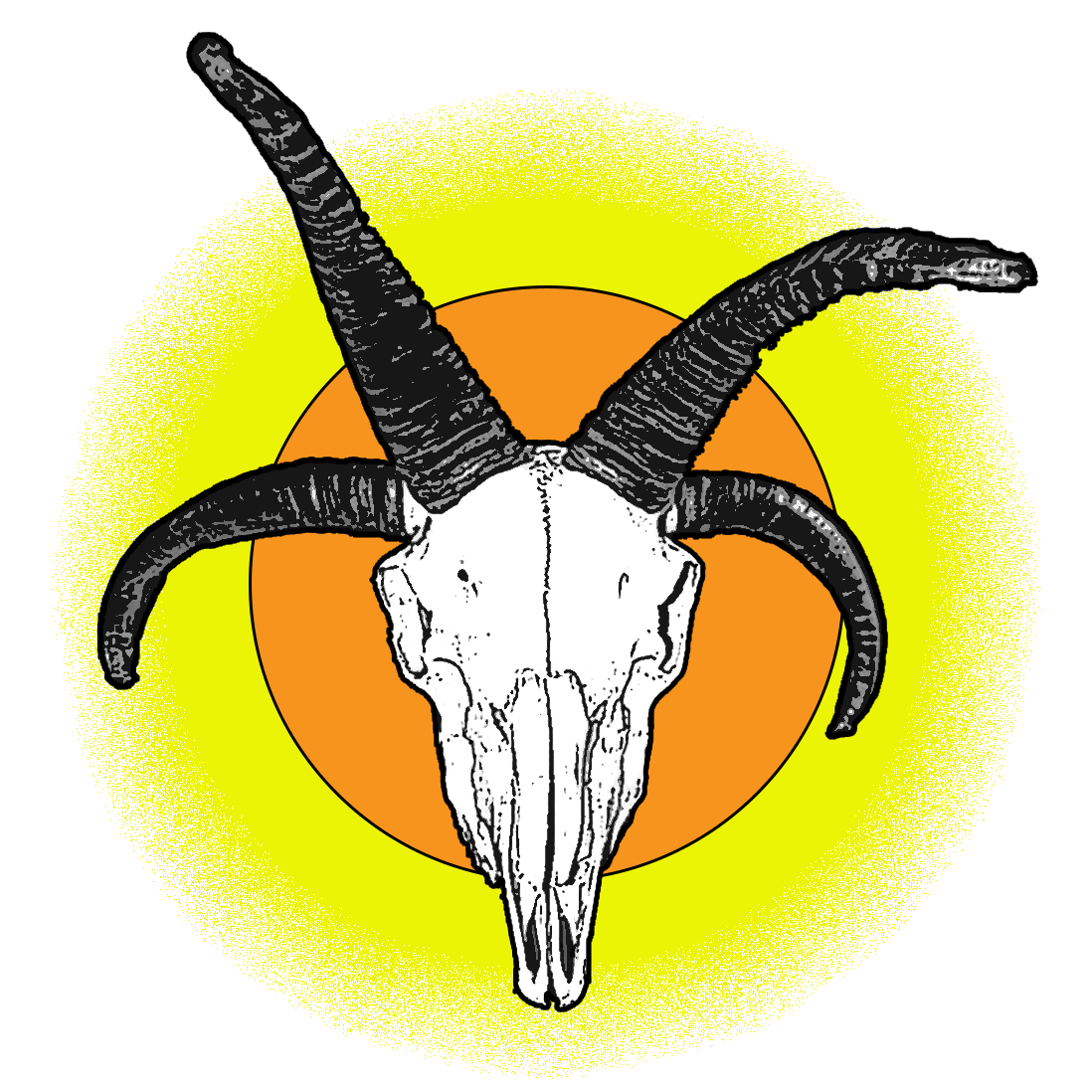
An Introduction to Navajo-Churro Sheep
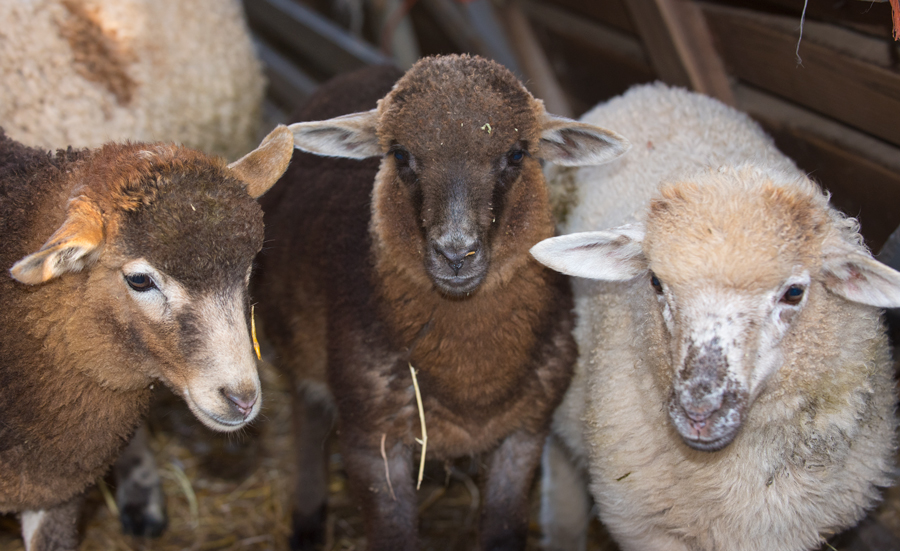 Every shepherd knows that their sheep are the best of all sheep, and there's no doubting that it must be a prerequisite for this line of work to be completely assured of this solid truth. Why else would we toil so hard at the long hours and sheer physical labor needed to be a successful shepherd, if we didn't believe in the superiority of our own animals? Here at Dot Ranch, we can't say that we're any exception to this rule, although I would like to think that our sheep truly are as fantastic as my heart describes. When you dedicate your life not only to sheep, but to a heritage breed of sheep, you need to be even doubly assured that your animals really are the best of the best. Becoming a steward of a heritage breed isn't just about owning a unique breed, or enjoying a rarity. It's about being responsible for the perpetuation of a long and rich past, into a strong and healthy future.
Every shepherd knows that their sheep are the best of all sheep, and there's no doubting that it must be a prerequisite for this line of work to be completely assured of this solid truth. Why else would we toil so hard at the long hours and sheer physical labor needed to be a successful shepherd, if we didn't believe in the superiority of our own animals? Here at Dot Ranch, we can't say that we're any exception to this rule, although I would like to think that our sheep truly are as fantastic as my heart describes. When you dedicate your life not only to sheep, but to a heritage breed of sheep, you need to be even doubly assured that your animals really are the best of the best. Becoming a steward of a heritage breed isn't just about owning a unique breed, or enjoying a rarity. It's about being responsible for the perpetuation of a long and rich past, into a strong and healthy future.
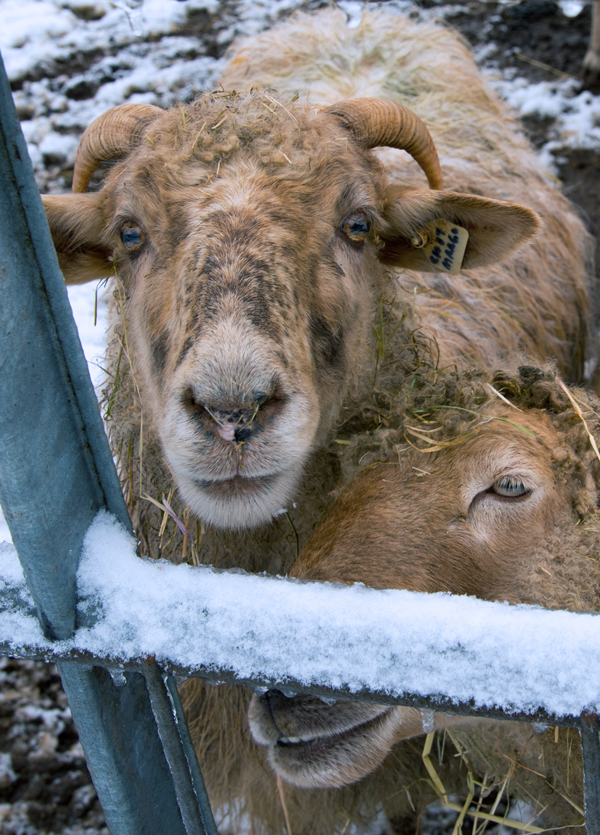 "So why raise Navajo-Churro Sheep?" It's a common question, and one which could take a while to answer if you catch me on a slow day. The truth varies depending on what day of the week it is, but it's all part and parcel of the greatest truth of them all: Because I love them.
"So why raise Navajo-Churro Sheep?" It's a common question, and one which could take a while to answer if you catch me on a slow day. The truth varies depending on what day of the week it is, but it's all part and parcel of the greatest truth of them all: Because I love them.
Navajo-Churro Sheep are uniquely suited to the small sustainable ranch. They can thrive on forage that most modern sheep would bloat or starve on, and they will positively reward you beyond all reasonable expectations in wool and lambs if they are well fed and watered. They can exist in some of the most inimical environments of North America, surviving days without water, which makes them uniquely situated to today's drought stricken landscape.
Their fleece is unmistakable, with it's tri-part dual coat that consists of a small amount of tough, durable kemp, a soft and fine inner coat, and a long, lustrous and supremely strong outer coat. Unlike the fleece of many other breeds, Navajo-Churro Sheep have a relatively straight coat, completely free of crimp and usually only with a very gentle wiggle. While their wool isn't as soft as their more famous Spanish counterparts the Merino, Navajo-Churro wool is much stronger, more long lasting, and more likely to be water repellant and insulative. This makes their fleece profoundly suitable for rugs, weavings, and overgarments. The long lasting beauty of Navajo rugs owes a great deal of its durability and luster to the wool of the Navajo-Churro Sheep, a fact which true collectors never argue. However, fleece isn't the only thing Navajo-Churro Sheep have going for them. They are also known for their cream rich milk which is perfectly suitable for traditional sheep cheeses such as Manchego, and their meat has a delightful light flavor that is sought after by restaurants and discerning chefs all across America.
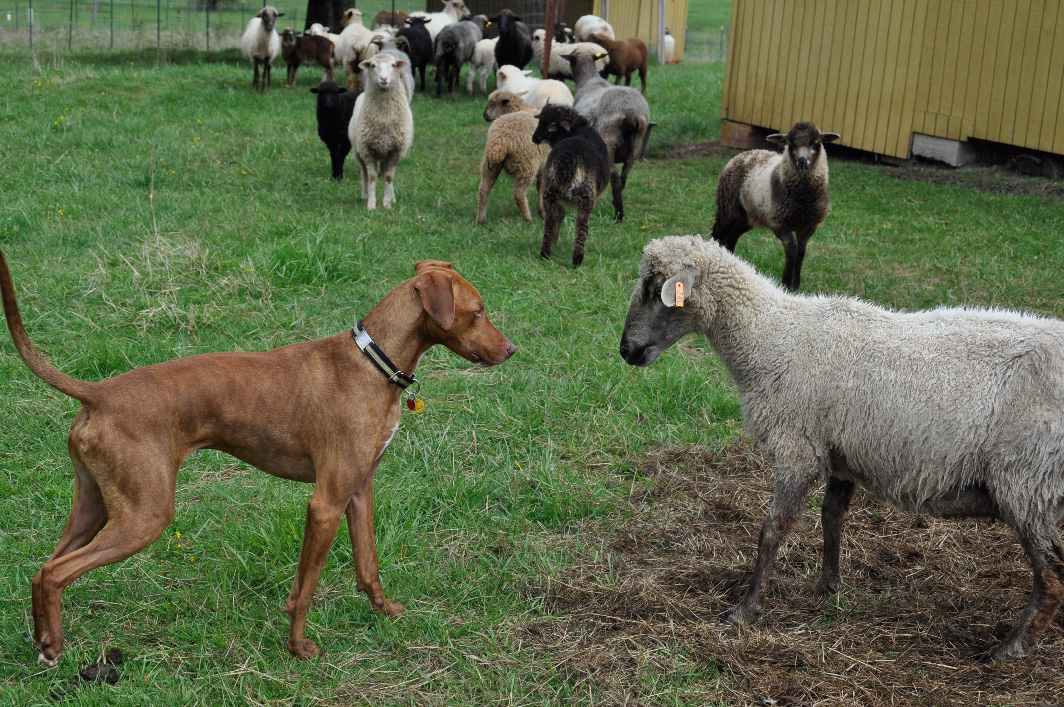 Navajo-Churro Sheep are the ultimate homestead sheep, what with their ability to survive in rapidly and aggressively changing environments. They are a smaller breed, but what they exchange for size is made up for in an intelligence and toughness that modern commercial sheep just flat out don't share. Their flocking instincts keep them alive in areas plagued by predators, and there is no mother so dedicated as a Navajo-Churro ewe. Twins and triplets aren't uncommon with these sheep, but unlike many other breeds, it's rare to wind up with bummer lambs. They readily recognize the difference between a known and friendly face (including the farm dogs) and the unknown and dangerous faces of predators, strange dogs, and new people. Due to their intelligence and instinctive behavior, Navajo-Churro Sheep aren't as docile as modern commercial breeds, but they also aren't nearly as easy to kill through poisoning or predation.
Navajo-Churro Sheep are the ultimate homestead sheep, what with their ability to survive in rapidly and aggressively changing environments. They are a smaller breed, but what they exchange for size is made up for in an intelligence and toughness that modern commercial sheep just flat out don't share. Their flocking instincts keep them alive in areas plagued by predators, and there is no mother so dedicated as a Navajo-Churro ewe. Twins and triplets aren't uncommon with these sheep, but unlike many other breeds, it's rare to wind up with bummer lambs. They readily recognize the difference between a known and friendly face (including the farm dogs) and the unknown and dangerous faces of predators, strange dogs, and new people. Due to their intelligence and instinctive behavior, Navajo-Churro Sheep aren't as docile as modern commercial breeds, but they also aren't nearly as easy to kill through poisoning or predation.
A Unique History, A Living Culture
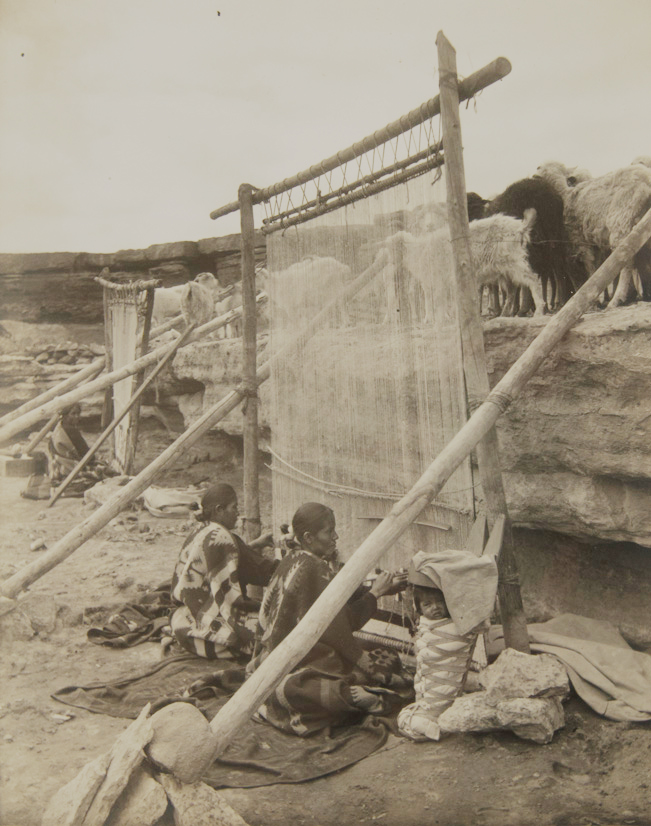 The true story of the Navajo-Churro Sheep lies within the heart of the Navajo Nation. Recorded history gives credit for the orignination of the Navajo-Churro to the Spaniards, but Navajo oral histories show that sheep were a gift from Changing Woman, a sacred Mother who gave life to all of the living beings of the world and to the Navajo people.1 To really understand the history of the Navajo Churro, and to accept both Eurocentric history and Navajo history in their equal relevance, we have to examine the ancestors of the Navajo-Churro, the Iberian Churra Sheep.2 Before the Spaniards, if you trace the Churra's history even further back, it's revealed that the Moors brought the sheep with them as they raided across Europe, and in fact there are many pockets of distinctly similar sheep all across the places that the Moors once ruled.3 Long after the Moors had been pushed back, the Churras persisted, although they were little valued, being both a longstanding reminder of the Moorish occopuation and being light bodied, with short, coarse wool that was not used often.4 When the Spaniards began their period of expansion, the export of Merino sheep was punishable by death, but Churra sheep, valued only for their hardiness and meat, were just the ticket to once again feed an invading force, this time the Spanish Conquistadors in the late 1400's.4 However, it wasn't until far later that the Churras advanced into Navajo territory. First, in the late 1500's the Spaniards advanced up from Mexico and into the Pueblos of the Southwest and the Rio Grande's fertile banks, bringing with them steel, disease, Christianity, and sheep.4 In some of the stories of the Diné, the Churro sheep were a gift from Changing Woman, sent to prevent starvation and poverty.1 History shows us that the Churras were used for just that, serving as a walking menu for the armies of first the Moorish Empire, and then the Spanish Conquistadors. While it's certain that the first Churra sheep arrived with the Spaniards, it's also just as certain that to many, the sheep were an answer to prayers for relief from hunger and poverty alike.
The true story of the Navajo-Churro Sheep lies within the heart of the Navajo Nation. Recorded history gives credit for the orignination of the Navajo-Churro to the Spaniards, but Navajo oral histories show that sheep were a gift from Changing Woman, a sacred Mother who gave life to all of the living beings of the world and to the Navajo people.1 To really understand the history of the Navajo Churro, and to accept both Eurocentric history and Navajo history in their equal relevance, we have to examine the ancestors of the Navajo-Churro, the Iberian Churra Sheep.2 Before the Spaniards, if you trace the Churra's history even further back, it's revealed that the Moors brought the sheep with them as they raided across Europe, and in fact there are many pockets of distinctly similar sheep all across the places that the Moors once ruled.3 Long after the Moors had been pushed back, the Churras persisted, although they were little valued, being both a longstanding reminder of the Moorish occopuation and being light bodied, with short, coarse wool that was not used often.4 When the Spaniards began their period of expansion, the export of Merino sheep was punishable by death, but Churra sheep, valued only for their hardiness and meat, were just the ticket to once again feed an invading force, this time the Spanish Conquistadors in the late 1400's.4 However, it wasn't until far later that the Churras advanced into Navajo territory. First, in the late 1500's the Spaniards advanced up from Mexico and into the Pueblos of the Southwest and the Rio Grande's fertile banks, bringing with them steel, disease, Christianity, and sheep.4 In some of the stories of the Diné, the Churro sheep were a gift from Changing Woman, sent to prevent starvation and poverty.1 History shows us that the Churras were used for just that, serving as a walking menu for the armies of first the Moorish Empire, and then the Spanish Conquistadors. While it's certain that the first Churra sheep arrived with the Spaniards, it's also just as certain that to many, the sheep were an answer to prayers for relief from hunger and poverty alike.
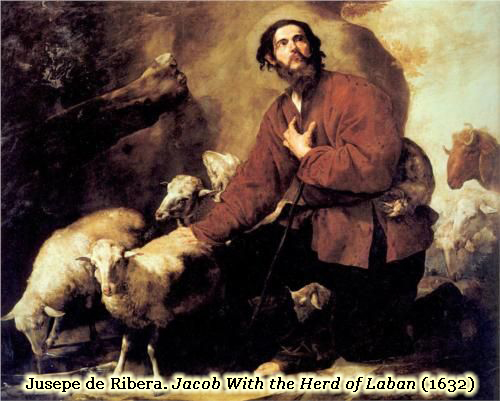 What can't be denied is that the Spanish and Portuguese Churra sheep are distinctly different from the Navajo-Churro Sheep of today. Churras were introduced into the Pueblos in the late 1500's, and while it's uncertain when the Navajo began raising them, it is likely that many Churras were seized in the 1600's as the Navajo waged a campaign of theft and warfare against the Mexicans and Pueblos.4 What is known is that by the 1700's, Navajo flocks numbered in the hundreds of thousands.4 Navajo rug weaving had already become recognized and sought after by the 1700's, and the Navajo-Churro Sheep had already become a distinctive breed of its own.2,4 The careful breeding and nurture of a distinct phenotype is due primarily to the women and feminine people of Navajo Nation who took these four legged children to their hearts and souls, bringing forth a sheep perfectly suited to their land and their life.5 When fine wool was burgeoning in demand, the Navajo-Churro was prized by the Navajo for its tough and lustrous outer coat, and a supremely fine and soft inner coat that could be spun alone, or in tandem with the outer coat to produce a tough yet color rich yarn. These traits were uniquely suited to the large vertical looms that the women relied on for their weaving, while finer wool from Merinos tended to shred and fall apart under the high tension that their looms required.5 Navajo-Churro sheep came to hold such importance that ceremonies and songs have been built around them. A common saying comes to mind, "Sheep is life." This simple statement is poignantly profound, especially when considering that the more traditional elders continue to live on a subsistence based economy. For many families, their flock provides fiber, meat, and a source of income both in trade and cash which otherwise is scarce.
What can't be denied is that the Spanish and Portuguese Churra sheep are distinctly different from the Navajo-Churro Sheep of today. Churras were introduced into the Pueblos in the late 1500's, and while it's uncertain when the Navajo began raising them, it is likely that many Churras were seized in the 1600's as the Navajo waged a campaign of theft and warfare against the Mexicans and Pueblos.4 What is known is that by the 1700's, Navajo flocks numbered in the hundreds of thousands.4 Navajo rug weaving had already become recognized and sought after by the 1700's, and the Navajo-Churro Sheep had already become a distinctive breed of its own.2,4 The careful breeding and nurture of a distinct phenotype is due primarily to the women and feminine people of Navajo Nation who took these four legged children to their hearts and souls, bringing forth a sheep perfectly suited to their land and their life.5 When fine wool was burgeoning in demand, the Navajo-Churro was prized by the Navajo for its tough and lustrous outer coat, and a supremely fine and soft inner coat that could be spun alone, or in tandem with the outer coat to produce a tough yet color rich yarn. These traits were uniquely suited to the large vertical looms that the women relied on for their weaving, while finer wool from Merinos tended to shred and fall apart under the high tension that their looms required.5 Navajo-Churro sheep came to hold such importance that ceremonies and songs have been built around them. A common saying comes to mind, "Sheep is life." This simple statement is poignantly profound, especially when considering that the more traditional elders continue to live on a subsistence based economy. For many families, their flock provides fiber, meat, and a source of income both in trade and cash which otherwise is scarce.
It is no surprise that this history and cultural tradition has faced threats from many sources. During the "Navajo Wars" of 1846-1864, spanning eight presidencies, the U.S. Government issued orders for the destruction of Navajo livestock and crops, and finally for the removal of the Navajo people from their homeland.7 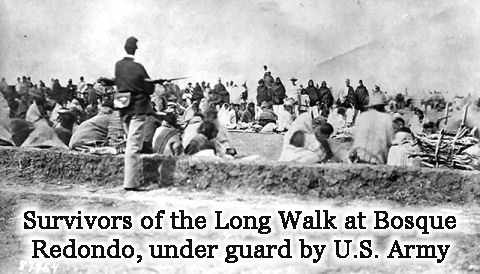 The Navajo refer to this removal as The Long Walk, for they were forced to walk from their homeland in Arizona to an internment camp at Bosque Redondo, in eastern New Mexico. Families who didn't comply with the removal were slaughtered until finally only a handful of Navajo were left in their lands, hiding deep in the mountains and canyons, struggling to survive with their crops and a few remaining Navajo-Churro sheep and Spanish Goats.1,7 The eventual release of the Navajo to the lands that now make up the Navajo Nation occurred in 1868, with Navajo populations having plummeted, and those remaining left destitute with their livestock decimated.6,7 As part of the release agreement, 15,000 sheep were given to the survivors of Fort Sumner/Bosque Redondo, mainly Navajo-Churro ewes and some Merino rams given to the Navajo in an attempt to "improve" the breed with finer wool and larger size.8 This theme of controlling the Navajo by controlling their livestock continued on through into today, from the Livestock Reduction policies of the 1930's, to the Livestock Improvement programs of the 1930-60's, the Navajo-Churro Sheep were targeted specifically for over two centuries.5,8 The result was, an estimation of nearly 1 million Navajo sheep and goats was reduced dramatically to mere thousands.
The Navajo refer to this removal as The Long Walk, for they were forced to walk from their homeland in Arizona to an internment camp at Bosque Redondo, in eastern New Mexico. Families who didn't comply with the removal were slaughtered until finally only a handful of Navajo were left in their lands, hiding deep in the mountains and canyons, struggling to survive with their crops and a few remaining Navajo-Churro sheep and Spanish Goats.1,7 The eventual release of the Navajo to the lands that now make up the Navajo Nation occurred in 1868, with Navajo populations having plummeted, and those remaining left destitute with their livestock decimated.6,7 As part of the release agreement, 15,000 sheep were given to the survivors of Fort Sumner/Bosque Redondo, mainly Navajo-Churro ewes and some Merino rams given to the Navajo in an attempt to "improve" the breed with finer wool and larger size.8 This theme of controlling the Navajo by controlling their livestock continued on through into today, from the Livestock Reduction policies of the 1930's, to the Livestock Improvement programs of the 1930-60's, the Navajo-Churro Sheep were targeted specifically for over two centuries.5,8 The result was, an estimation of nearly 1 million Navajo sheep and goats was reduced dramatically to mere thousands.
The Navajo-Churro in Contemporary Culture
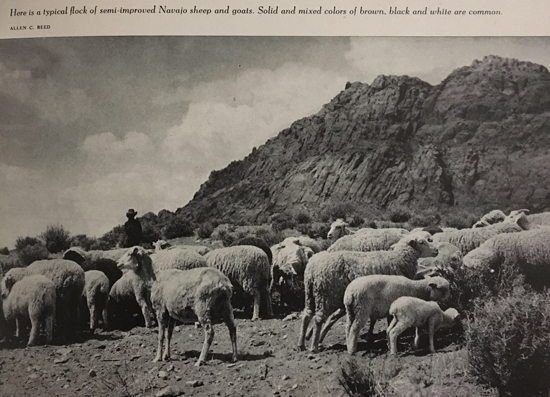 By the 1950's, there was a growing concern that the "Old Navajo" Sheep would be lost, with even popular magazines and newspapers across the country releasing stories on the subject. The SW Range and Sheep Breeding Laboratory had imported fine wool and commercial meat breeds of sheep for crossing with a nucleus flock of 800 Navajo-Churro ewes, but when the wool was tested by the weavers, it proved inferior, and the animals were both more prone to disease and less hardy in the challenging environment.9 By the 1960's, after decades of breeding, the end result was an animal that had an improved carcass weight but a decline in wool quality from pure Navajo-Churro Sheep.9 The SW Range and Sheep Breeding Laboratory closed in 1966, and at this point the official fate of the Churro became entangled with a succession of NGO's. The two most prominent organizations were both founded by non-Navajo individuals, starting with The Navajo Sheep Project which was established in 1977 by Dr. Lyle McNeal of Utah State University, who then went on to join others in establishing the Navajo-Churro Sheep Association in June, 1986.12 While the NSP focused primarily on research and sheep management with Navajo and Hispanic breeders in the SW, the N-CSA focused on establishing a registry and breed standard, there by enabling non-Native and Native breeders alike to track their animals on a larger scale.
By the 1950's, there was a growing concern that the "Old Navajo" Sheep would be lost, with even popular magazines and newspapers across the country releasing stories on the subject. The SW Range and Sheep Breeding Laboratory had imported fine wool and commercial meat breeds of sheep for crossing with a nucleus flock of 800 Navajo-Churro ewes, but when the wool was tested by the weavers, it proved inferior, and the animals were both more prone to disease and less hardy in the challenging environment.9 By the 1960's, after decades of breeding, the end result was an animal that had an improved carcass weight but a decline in wool quality from pure Navajo-Churro Sheep.9 The SW Range and Sheep Breeding Laboratory closed in 1966, and at this point the official fate of the Churro became entangled with a succession of NGO's. The two most prominent organizations were both founded by non-Navajo individuals, starting with The Navajo Sheep Project which was established in 1977 by Dr. Lyle McNeal of Utah State University, who then went on to join others in establishing the Navajo-Churro Sheep Association in June, 1986.12 While the NSP focused primarily on research and sheep management with Navajo and Hispanic breeders in the SW, the N-CSA focused on establishing a registry and breed standard, there by enabling non-Native and Native breeders alike to track their animals on a larger scale.
For reasons never officially explained, the NSP and the N-CSA do not seem to work closely together, despite ostensibly sharing the same goals of conservation and education. This is notable, in that both organizations have membership overlap and indeed, a key member of the NSP serves a key position of the N-CSA. Yet despite this, no sheep from the NSP are registered with the N-CSA except by third parties. This casts an interesting light on the oft repeated claim that members of both organizations quote, that there were under 500 Navajo-Churro sheep remaining by the 1970's. 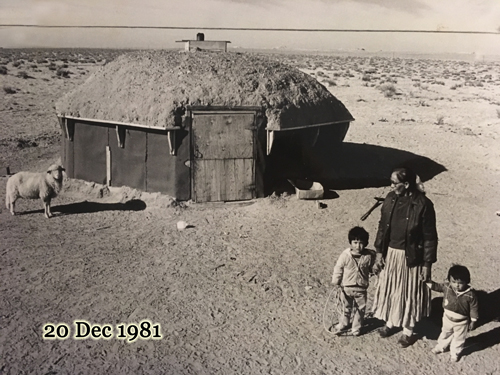 Trying to discover where this claim came from is especially puzling since it is widely known in the Navajo community that there were numerous flocks who, even to this day, did not come into contact with either the Navajo Sheep Project or the Navajo-Churro Sheep Association. Given the long and bloody history which punctuates the Navajo relationships with their livestock, outsider authorities, and government officials, it is almost certain that any attempts to take an accurate census of the remaining Navajo-Churro Sheep would have failed. This claim appears to come from the establishment of the Navajo Sheep Project, and is cited by their site as having come from a 1972 "census conducted by the Navajo Tribal Veterinary Services discovered that less then 435 original 'old-type' Navajo Churros existed on the Reservation."10 However, while researching this claim, the tribal veterinary services website states that the service was only established in 1982.11 These troubling inconsistencies make it hard to take historical information from non Navajo sources at face value, but overall, they don't detract from the mission readiness of either organization. As of July, 2019, the original timeline that this information came from has been removed from the Navajo Sheep Project website, and hopefully the accuracy and origin of this information will soon be clarified. Regardless of the accuracy of the "under 500 remaining" statement, nobody can deny that the population was indeed substantially reduced, and the establishment of both the NSP and the N-CSA did much to increase mainstream public interest in discovering and preserving this important part of American history. Both organizations have contributed in the demonstrated success of reestablishing Navajo-Churro Sheep populations, and in providing the breed standards by which most Navajo-Churo breeders guide their efforts.
Trying to discover where this claim came from is especially puzling since it is widely known in the Navajo community that there were numerous flocks who, even to this day, did not come into contact with either the Navajo Sheep Project or the Navajo-Churro Sheep Association. Given the long and bloody history which punctuates the Navajo relationships with their livestock, outsider authorities, and government officials, it is almost certain that any attempts to take an accurate census of the remaining Navajo-Churro Sheep would have failed. This claim appears to come from the establishment of the Navajo Sheep Project, and is cited by their site as having come from a 1972 "census conducted by the Navajo Tribal Veterinary Services discovered that less then 435 original 'old-type' Navajo Churros existed on the Reservation."10 However, while researching this claim, the tribal veterinary services website states that the service was only established in 1982.11 These troubling inconsistencies make it hard to take historical information from non Navajo sources at face value, but overall, they don't detract from the mission readiness of either organization. As of July, 2019, the original timeline that this information came from has been removed from the Navajo Sheep Project website, and hopefully the accuracy and origin of this information will soon be clarified. Regardless of the accuracy of the "under 500 remaining" statement, nobody can deny that the population was indeed substantially reduced, and the establishment of both the NSP and the N-CSA did much to increase mainstream public interest in discovering and preserving this important part of American history. Both organizations have contributed in the demonstrated success of reestablishing Navajo-Churro Sheep populations, and in providing the breed standards by which most Navajo-Churo breeders guide their efforts.
Even when supported by the best efforts of multiple organizations and individuals, the Navajo-Churro Sheep is still under fire. Stock reductions are an ongoing saga in Navajo Nation, with energy companies and outside interests often gaining the ground that the sheep lose. Then there is a more insidious threat, one posed by non-Indigenous revisionists who want to claim this part of the Navajo culture for themselves. Whether it's to gain a sense of connection to the history of the SW, too many viewings of Dances with Wolves, or to insert themselves as "experts", it is all too easy for people to fall into the Great White Savior role. This is deeply ironic considering how hard both the United States Government and Anglo-American non profits worked to eradicate or "improve" the Navajo-Churro Sheep, at first in an effort to bring the Navajo to heel, and then in an effort to "help" Navajo families meet Anglo standards and demands.8 It cannot be emphasized enough that the true experts and saviors of the breed are the families who have been herding these sheep for generations. Uncorrupted by all outside efforts to determine for the Navajo people just what a "Navajo-Churro" really is, many Navajo continue to keep their own traditions alive, unannounced and unheralded by outsiders. It's important to remember that these sheep are part of a culture that is still alive, and that is still struggling against systemic abuse and injustice. There are no circumstances which justify non Navajo coming and dictating what should be considered a Navajo-Churro Sheep without consulting and deferring to the Navajo people themselves. Navajo-Churro breeders of all backgrounds need to be cognizant that what breeders do and say has an impact on more than just the conformation, fleece type, or coloration of these animals. What we do impacts a living culture and way of life which surrounds these sheep.
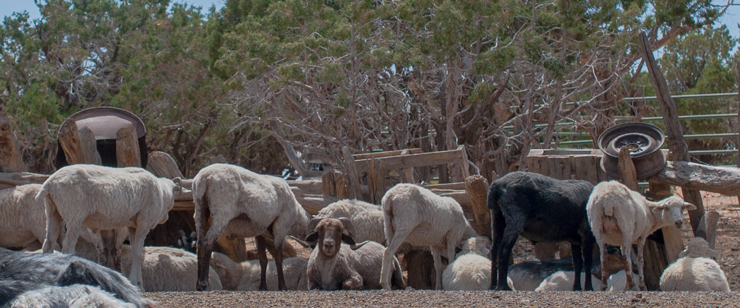
Red Willow Springs, AZ: Traditional mixed Navajo-Churro and Navajo-Angora flock of elder Mrs. E.B.; 2014
The Navajo-Churro Sheep of Dot Ranch
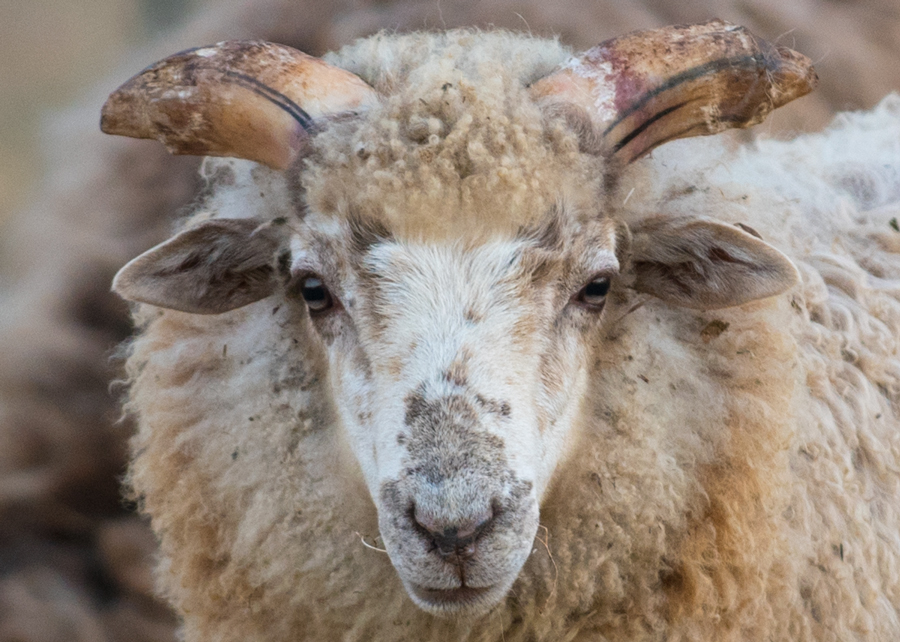 Yet another truth of shepherding lies in the fact that there is no "one true way" to raise sheep, a truth which some find harder to swallow than they would like to admit. Like any other ranchers out there, we have our own ideal of where we'd like things to wind up. When it comes to raising a heritage breed, it's all too easy to fall into the trap of believing that every single animal is precious, and they should all be bred. While I won't argue that all my sheep are precious, I can't stress enough that just because they're a rare breed doesn't mean that they should all be bred. I select my breeding stock with great care, because I only want the best possible representatives to pass on their qualities, leading to stronger offspring, Navajo weaver-approved fleece, higher quality meat, and of course, the approval of the elders who are our mentors. Most importantly of all, being selective in choosing breeding stock leads to a longer lasting breed, with the built in diversity needed to withstand a world that never stops changing.
Yet another truth of shepherding lies in the fact that there is no "one true way" to raise sheep, a truth which some find harder to swallow than they would like to admit. Like any other ranchers out there, we have our own ideal of where we'd like things to wind up. When it comes to raising a heritage breed, it's all too easy to fall into the trap of believing that every single animal is precious, and they should all be bred. While I won't argue that all my sheep are precious, I can't stress enough that just because they're a rare breed doesn't mean that they should all be bred. I select my breeding stock with great care, because I only want the best possible representatives to pass on their qualities, leading to stronger offspring, Navajo weaver-approved fleece, higher quality meat, and of course, the approval of the elders who are our mentors. Most importantly of all, being selective in choosing breeding stock leads to a longer lasting breed, with the built in diversity needed to withstand a world that never stops changing.
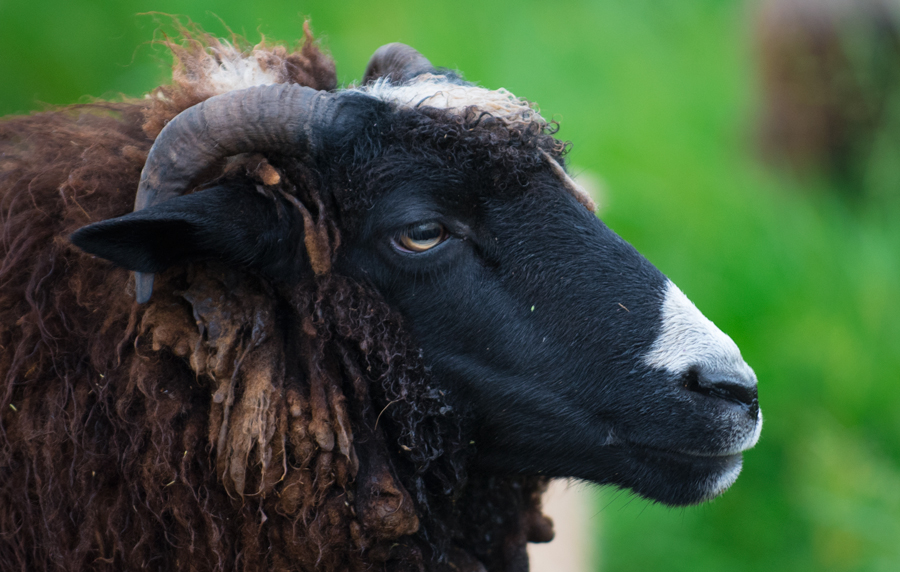
My own personal vision for our flock is tinged by my background and education in biology and natural resource management. The Dot Ranch breeding program centers around producing genetically diverse sheep that are true to the distinct traits of the Navajo-Churro breed, with an emphasis on fleece quality and meat production. While I do admit to a curiosity about the dairy aspects of this breed, I just don't have enough time to master everything. The largest commodity in production from our flock is fleece, sold both locally and globally through various artists market places. Most of our customers are handspinners, carrying on a tradition nearly as old as humanity itself. Navajo-Churro fleece is also in high demand with felters who make the most of its unique texture and unparalleled strength.
We select our breeding stock for their temperament, physical conformation, flocking instincts, hardiness, fleece, and genetic background. A good portion of the guidance we receive on selecting breeding stock comes from direct and consistent interaction with Navajo weavers and sheep herders. There is nothing quite so humbling as having a 70+ year old woman hop up into your trailer, wave her hand over a number of sheep and declare (through the help of her younger sibling who translated for us) "These are not good Churros. That one, that is a good Churro."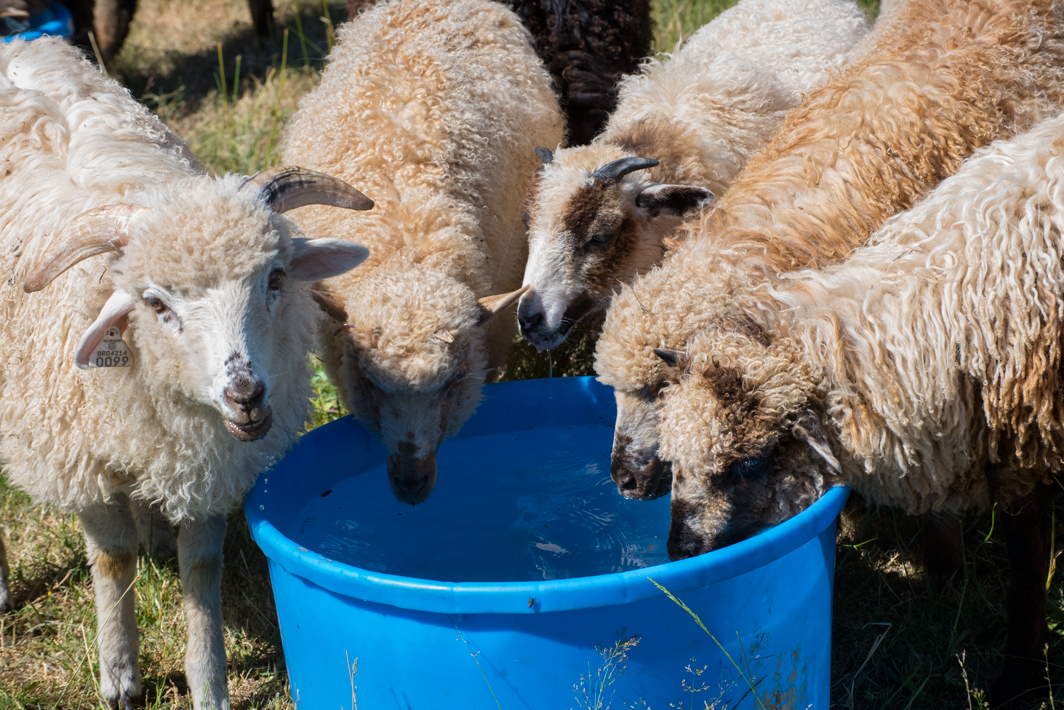 Receiving this kind of feedback has been invaluable in deciding which animals to cull and which to keep, and this is a good part of why the annual trips to the SW are more than a business opportunity, they're an unparalleled ongoing learning experience. As we so often state time and again, it's important to remember that these sheep are part of a living culture, one that deserves our respect and our deference. We don't just rely on the grace and patience of Navajo shepherds for help and guidance though, we also seek the advice of established non-native Navajo-Churro breeders, and shepherds across the globe who focus on different breeds altogether. By seeking input and receiving advice from a wide variety of people and breeders, we get the benefit of a broader sense of experience in both what we're looking at, and the oh crap moments that are a part of ranching.
Receiving this kind of feedback has been invaluable in deciding which animals to cull and which to keep, and this is a good part of why the annual trips to the SW are more than a business opportunity, they're an unparalleled ongoing learning experience. As we so often state time and again, it's important to remember that these sheep are part of a living culture, one that deserves our respect and our deference. We don't just rely on the grace and patience of Navajo shepherds for help and guidance though, we also seek the advice of established non-native Navajo-Churro breeders, and shepherds across the globe who focus on different breeds altogether. By seeking input and receiving advice from a wide variety of people and breeders, we get the benefit of a broader sense of experience in both what we're looking at, and the oh crap moments that are a part of ranching.
Through many years and a whole lot of learning when to let go of expectations, we finally have a flock of Navajo-Churro sheep that passes muster. We could never have accomplished this without the help and generosity of many people, both Navajo and non-Native alike. To view our sheep, please navigate from the main menu of this site. The site is organized so that from the sheep tab, you can select each year and see our breeding stock or lambs from that year. This gives a good feel for the journey we're on, and allows us to share how our flock is evolving. Being able to go back and see the sires and dams of previous years is particularly helpful in trying to decide which breeding groups to put together, or in tracking the inevitable problems that arise from working with such a genetically constricted population.
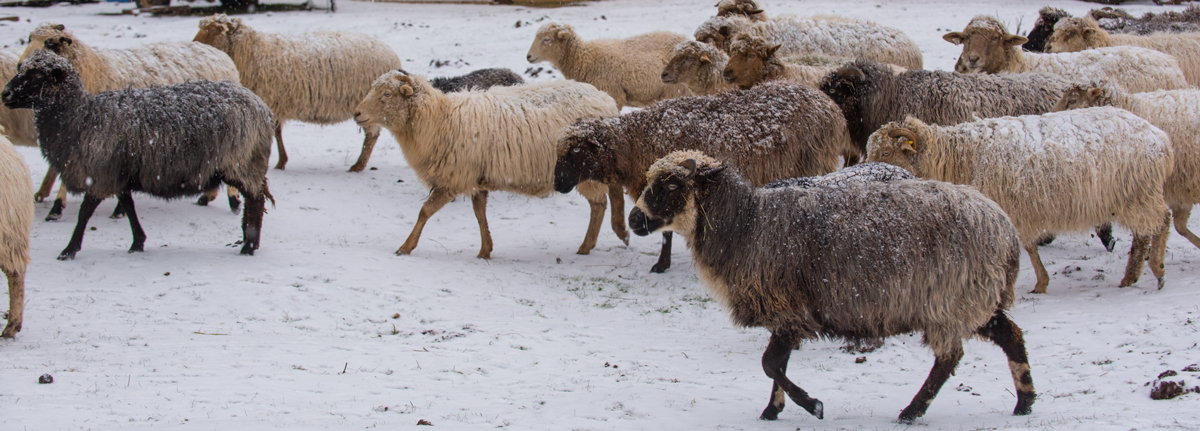
Further Information on Navajo-Churro Sheep
Bailey, L. R. (1980). If You Take My Sheep-- : The Evolution and Conflicts of Navajo Pastoralism, 1630-1868. Pasadena, Calif.: Westernlore Publications.
Boyce, G. A. (1974). When Navajos Had Too Many Sheep: the 1940's. San Francisco, CA: The Indian Historian Press.
Kupper, W. (1945). The Golden Hoof (First ed.). New York, NY: Alfred A. Knopf, Inc.
Weisiger, M. (2009). Dreaming of Sheep in Navajo Country (First Paperback ed.). Seattle, WA: University of Washington Press.
Following a Navajo Sheep Herder: NY Times
More Arrests and Sheep Impoundments on Disputed Navajo Land
Black Mesa Residents and Supporters Demand Halt to Livestock Impoundments
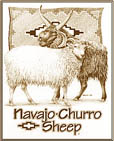 The Navajo Churro Sheep Association is an obvious first stop for both the newcomer and the oldtimer in the Navajo-Churro world. While you're there, I highly recommend you download the "Guide to the Selection of Navajo-Churro Sheep". (Or just click save as on that link and let it download!)
The Navajo Churro Sheep Association is an obvious first stop for both the newcomer and the oldtimer in the Navajo-Churro world. While you're there, I highly recommend you download the "Guide to the Selection of Navajo-Churro Sheep". (Or just click save as on that link and let it download!)
 No discussion of Navajo-Churro Sheep should ever exclude the very people who engendered this magnificent breed. To learn about the Diné (Navajo) peoples and their fight to keep their culture alive, visit the Diné be’ Iiná website.
No discussion of Navajo-Churro Sheep should ever exclude the very people who engendered this magnificent breed. To learn about the Diné (Navajo) peoples and their fight to keep their culture alive, visit the Diné be’ Iiná website.
Citations
1 Wetherill, L. W., & Leake, H. (2007). Wolfkiller: Wisdom from a Nineteenth-Century Navajo Shepherd. Salt Lake City, UT: Gibbs Smith.
2 Kupper, W. (1945). The Golden Hoof (First ed.). New York, NY: Alfred A. Knopf, Inc.
3 Irigoyen-García, J. (2014). The Spanish Arcadia: Sheep Herding, Pastoral Discourse, and Ethnicity in Early Modern Spain: University of Toronto Press.
4 Dunmire, W. W.(2013). New Mexico's Spanish Livestock Heritage: Four Centuries of Animals, Land, and People. Albuquerque, NM: University of New Mexico Press.
5 Weisiger, M. (2009). Dreaming of Sheep in Navajo Country (First Paperback ed.). Seattle, WA: University of Washington Press.
6 Iverson, P., & Roessel, M. (2002). Diné: A History of the Navajos. Albuquerque, NM: University of New Mexico Press.
7 Bailey, L. R. (1980). If You Take My Sheep-- : The Evolution and Conflicts of Navajo Pastoralism, 1630-1868. Pasadena, Calif.: Westernlore Publications.
8 Boyce, G. A. (1974). When Navajos Had Too Many Sheep: the 1940's. San Francisco, CA: The Indian Historian Press.
9 NM History: Southwest Range and Sheep Breeding Lab
10 Navajo Sheep Project Timeline
11 Navajo Nation Veterinary and Livestock Program
12 Date corrections courtesy of Dr. Lyle McNeal, personal email, 7/16/2019
